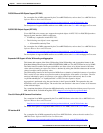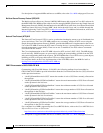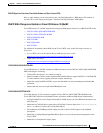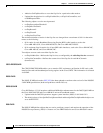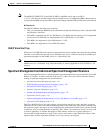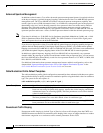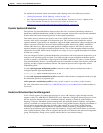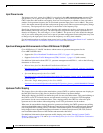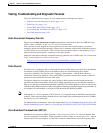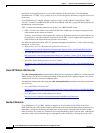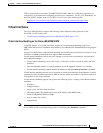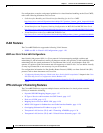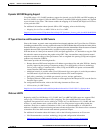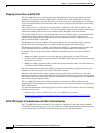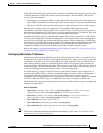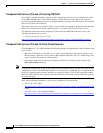
1-123
Cisco uBR7200 Series Universal Broadband Router Software Configuration Guide
OL-2239-05
Chapter1 Overview of Cisco uBR7200 Series Software
cops tcp window-size
Testing, Troubleshooting and Diagnostic Features
The Cisco uBR7200 Series supports several troubleshooting and diagnostic features:
• Cable Downstream Frequency Override, page 1-123
• Cable Flap List, page 1-123
• Cisco CMTS Static CPE Override, page 1-124
• Cisco Broadband Troubleshooter (CBT) 3.2, page 1-123
• Fast Fault Detection, page 1-124
Cable Downstream Frequency Override
Support for the cable downstream override command was introduced for the CiscouBR7200 series
routers in the Cisco IOS 12.0 SC, 12.1 EC, and 12.1T release trains.
This command is never needed for normal operations, because downstream frequency override is
enabled by default for DOCSIS operations. However, this command can be used to disable the frequency
override feature for test and lab use. This override forces the cable modems on that interface to use a
particular downstream frequency, regardless of the signal quality.
Additional information about this command and usage guidelines are available in the Cisco Broadband
Cable Command Reference Guide on Cisco.com:
http://www.cisco.com/univercd/cc/td/doc/product/cable/bbccmref/index.htm
Cable Flap List
The flap list is a patented tool that is incorporated in the Cisco IOS software for the Cisco Cable Modem
Termination System (CMTS) universal broadband routers for troubleshooting cable modem
connectivity problems. The flap list tracks “flapping” cable modems—cable modems that have
intermittent connectivity problems—that could indicate a problem with the cable modem or with the
upstream or downstream portion of the cable plant.
The flap-list feature does not require any special polling or data transmissions but instead monitors the
registration and station maintenance activity that is already performed over any network that conforms to
Data-over-Cable Service Interface Specifications (DOCSIS). The CMTS, therefore, collects its flap-list data
without creating additional packet overhead and without impacting network throughput and performance. It
also supports any cable modem or set-top box (STB) that meets the DOCSIS standard.
Note Although this is a Cisco proprietary CMTS feature, it is compatible with all DOCSIS-compliant cable
modems. Unlike other monitoring methods that use the Simple Network Management Protocol (SNMP),
the flap list uses zero bandwidth.
For additional flap list information, refer to the chapter titled “Flap List Troubleshooting for the Cisco Cable
Modem Termination System” in the Cisco Cable Modem Termination System Feature Guide on Cisco.com.
Cisco Broadband Troubleshooter (CBT) 3.2
Multiple Service Operators (MSOs) provide a variety of services such as TV, video on demand, data,
and voice telephony to subscribers. Cable companies provide a variety of services such as TV, video on
demand, data, and voice telephony to subscribers. Network Administrators and radio frequency (RF)



